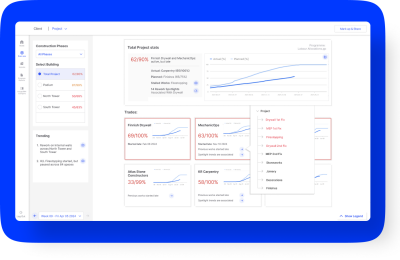Dear President-Elect Obama:
You’ve just landed the toughest job in the world. Everyone I know, even if they didn’t vote for you or couldn’t vote for you, wants to help you succeed in getting America’s economy back on track – soon, very soon.
Some economists fret that spending on infrastructure –the centerpiece of your recovery plan –means the money won’t circulate quickly enough. Here are three fresh, but proven ideas for how we can achieve the most impact for this infrastructure investment in the shortest possible time.
Execute shovel-ready projects first, but make sure they’re really shovel- ready
Getting started with projects that have already been designed makes the most sense if you want to see payrolls right away. However, some of these so-called shovel-ready projects have been on the shelf for years. Nothing ever stays the same. Designs rot. Conditions change – new buildings get constructed, utilities are installed, pavement gets resurfaced and on and on. And the changes are not always updated in project design documents.
Recommendation: Fund federal and state agencies to deploy new mobile mapping and 3D scanning technologies on so-called shovel- ready projects to validate actual field conditions against design constraints before starting construction. This proven approach cuts weeks or months off project schedules compared to conventional techniques and avoids costly blunders.
Bonus: New mobile scan systems enable data capture at posted speeds. Humans in orange vests can be kept out of harm’s way and the flow of people and goods need not be disrupted. Businesses, commuters and consumers need less transportation disruption, not more.
Scale up pilot success with 3D to full production on new infrastructure projects
Some of the most technically innovative people work in the public sector. Yet, many public sector agencies are mired in old 2D workflows with ancient tools. Just try imagining engineering and construction without the use of the Internet or the Global Positioning System (GPS). Mr. Obama, if you can imagine giving up your Blackberry for a rotary dial phone, you’ll understand what that means. If we want to engage the best young minds to help solve our problems, let’s give them today’s 3D tools, not yesterday’s hand-me-downs. The public sector needs to have a 3D conversation with private sector engineering and construction firms. We need to build on the success of recent public sector pilot projects and scale up 3D investments to full production. We can no longer afford to let implementation policies lag behind technology advancement.
Recommendation: Reward the lions and champions of new 3D imaging and modeling work flows inside the federal and state agencies that design, construct and manage the nation’s infrastructure. They’re done a terrific job so far — let’s build on their success.
Recommendation: Scale up the the piloted and proven success found in organizations as diverse as the FBI, U.S. Secret Service, GSA, U.S. Geological Survey, the National Park Service, the Los Angeles County Sheriff’s Department, CALTRANS, Oregon DOT and NIST. The early results from these pilot programs are lean, green, fast, safe and right.
Bonus: GPS systems spawned a multibillion dollar industry. Stimulating public sector use of 3D capture and imaging technologies on infrastructure projects can replicate this success. This is one way we can innovate our way back to prosperity.
Engage private sector asset owners to share 3D asset information
One of the dividends of infrastructure renewal will be up-to-date, accurate and precise documentation of our nation’s infrastructure and collateral assets. Security planning and emergency response organizations ought to have secure access to these databases. Who can argue against that?
Recommendation: Mandate that this valuable3D information about our ports, bridges, roads, tunnels, airports, parks and public lands be integrated with private sector asset data. If we’re going to ask our firemen, police, emergency medical technicians and the like to enter an office tower, industrial plant, or hotel or convention center in an emergency, then they should have access to the best 3D data about what they can expect to encounter on property inside these assets. Where are the exits? Where are the tunnels? What are the room capacities? Where, exactly, are the utility controls? We need a coherent plan to knit together these burgeoning capabilities — our security and the safety of our first responders depends on this. We need to engage private sector asset owners and public sector agencies to work together.
Mr. Obama, if we can refurbish our country’s infrastructure, retool and re-employ the people managing these assets, and engage the private sector in a new mode of safety and security cooperation, then this is a step on the road to leading ourselves out of this economic quagmire.
What are we waiting for?





